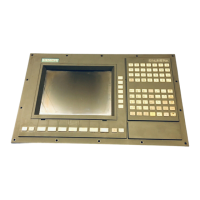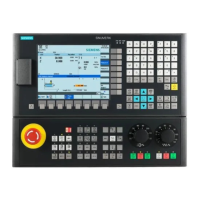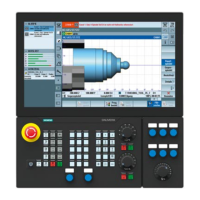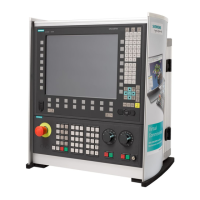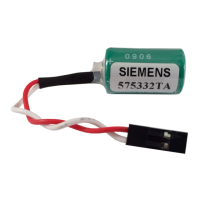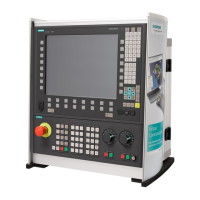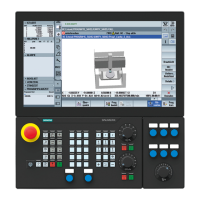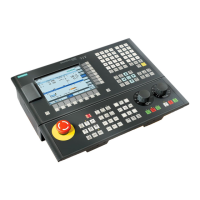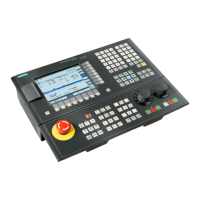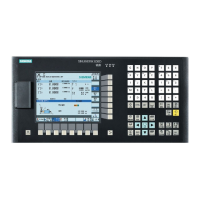Programming technological functions (cycles)
8.2 Milling
Milling
314 Operating Manual, 03/2010, 6FC5398-7CP20-1BA0
Following each insertion, the milling cutter is lifted by the height of the safety clearance at the
machining feedrate. As far as possible, this occurs during what is known as the retraction
process, i.e. if the milling cutter's wrap angle is less than 180°, it is lifted at a 45- angle from
the base in the opposite direction to the bisector of the wrap area.
The milling cutter then traverses over the material in rapid traverse.
Supplementary conditions for plunge cutting
● Roughing
1/2 slot width W - finishing allowance UXY ≤ milling cutter diameter
● Maximum radial infeed
The maximum infeed depends on the width of the cutting edge
of the milling cutter.
● Increment
The lateral increment is calculated on the basis of the required slot width, milling cutter
diameter and finishing allowance.
● Retraction
Retraction involves the milling cutter being retracted at a 45° angle if the wrap angle is
less than 180°.
Otherwise, retraction is perpendicular, as is the case with drilling.
● Retraction
Retraction is performed perpendicular to the wrapped surface.
● Safety clearance
Traverse through the safety clearance beyond the end of the
workpiece in order to avoid rounding-off the
slot walls at the ends.
Please note that the milling cutter’s cutting edge cannot be checked for the maximum radial
infeed.
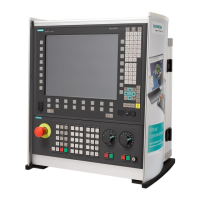
